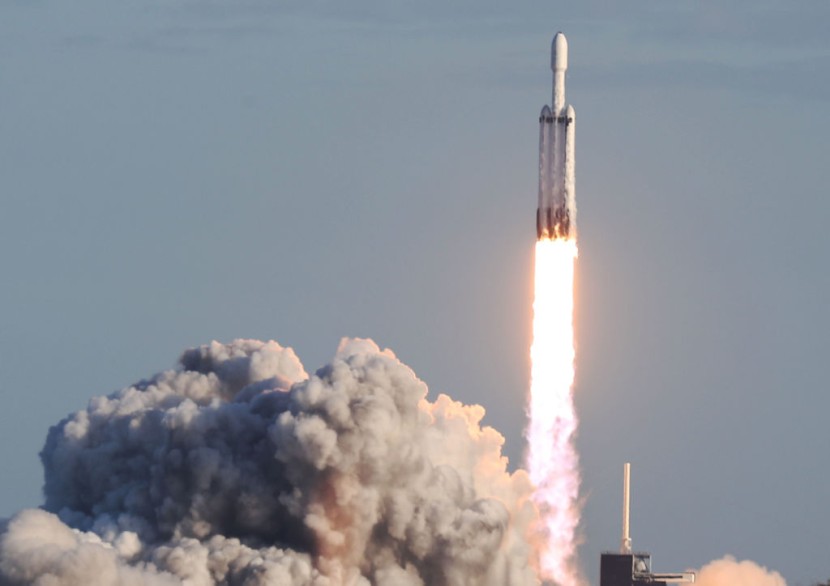
SpaceX successfully launched its newest Falcon Heavy rocket, a towering launch vehicle famous for its boosters' aerial acrobatics and synchronized landings, carrying a military payload to orbit.
The mission, which is dubbed USSF-67, launched at approximately 5:56 p.m. ET from Kennedy Space Center in Florida. The latest takeoff marked the fifth successful flight of the rocket that was recently dethroned as the world's most powerful operational launch vehicle. The mission was initially slated for a Saturday launch but was delayed for one day for reasons that needed to be clarified.
SpaceX's Falcon Heavy Launch
It was in 2018 when the Falcon Heavy rocket debuted at the time when SpaceX CEO Elon Musk attached his personal Tesla Roadster as a test payload. That vehicle is still in space and is taking an oblong path around the sun that swings out as far as Mars' orbital path.
The powerful spacecraft's launch followed up with two launches in 2019 before it took a three-year break. This was mainly due to the vast majority of SpaceX's missions not requiring the Falcon Heavy's massive power, as per CNN.
However, the company's Falcon 9 rocket was launched more than five dozen times in 2022 alone. It was used to send two groups of astronauts to space, Starlink satellites, and various other spacecraft.
SpaceX is now making good on its lucrative military launch contracts signed for the Falcon Heavy several years ago. In November, the rocket returned to flight with the launch of the United States military's USSF-44 mission. Furthermore, the launch on Sunday was a follow-up to that display of capability.
In a statement, the military's Space Operations Command said that USSF-44 carried six payloads on one satellite with advanced communications, space weather sensing, and other technologies into near-geosynchronous orbits.
Carrying Military Payload
The main payload of the most recent launch is a military communications satellite known as Continuous Broadcast Augmenting SATCOM 2. The Falcon Heavy spacecraft will send this to geostationary orbit located roughly 22,200 miles above Earth, according to Space.
Also included in the payload is a rideshare spacecraft called Long Duration Propulsive ESPA (LDPE)-3A. It is a payload adapter capable of holding up to six small satellites but, for now, will carry five Space Force payloads on USSF-67.
These include two operation prototypes for enhanced situational awareness and an operational prototype crypto/interface encryption payload designed to provide secure space-to-ground communications capabilities.
SpaceX's Falcon Heavy rocket consists of three Falcon 9 first stages, which have been modified and strapped together. Furthermore, the rocket's central booster is topped with a payload-carrying upper stage.
Residents from Florida gathered on the coast to watch the launch of SpaceX's Falcon Heavy rocket after years of inactivity. People stared as sonic booms crackled across the sky when the rocket's boosters touched down roughly eight minutes after takeoff. The latest launch of the space company's powerful rocket marks the first national security launch of 2023, according to The Hill.
Related Article: Milky Way-Like Galaxies From 11 Billion Years Ago








